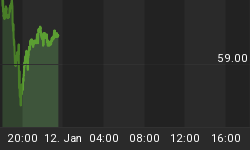Am I missing something? Has not the FOMC marginally moved toward - not all the way to - an agnostic position with regard to its next likely directional change in the federal funds rate? That's what I took away from Fed Chairman Bernanke's JEC testimony and Q & A today. Yes, the FOMC still sees higher inflation as the "predominant policy concern ...[h]owever, the uncertainties around the outlook have increased somewhat in recent weeks." One of those uncertainties has to do with business capital spending. To wit, "the magnitude of the slowdown [in business equipment and software expenditures] has been somewhat greater than would be expected given the normal evolution of the business cycle." And today's anemic report on February durable goods orders and shipments reinforced the notion that the slowdown is greater than the Fed expected. Any other downside risks? "[T]he correction in the housing market could turn out to be more severe ... perhaps exacerbated by problems in the subprime sector." And perhaps by problems in the Alt-A market, too. "Moreover, we could see greater spillover from the weakness in housing to employment and consumer spending than has occurred thus far. Ask the folks in Irvine, California, the headquarters of New Century Financial about the spillover from housing into employment and consumer spending ("Subprime Mortgage Collapse Eviscerates California Headquarters", Bloomberg, March 28, 2007). My reading of all this is that the FOMC, although still concerned that inflation might not moderate into its comfort zone, is also is now worried more than it was on January 31 that real economic growth will not stabilize in the range of 2% to 2-1/4%, but rather will head toward zero or below. That worry is well placed if the FOMC takes into consideration the behavior of the index of Leading Economic Indicators (see The Econtrarian, March 22, 2007, "Recession Imminent? Both the LEI and the KRWI are Flashing Warning").
January-February Durable Goods Orders/Shipments Bode Poorly For Capex
New orders for durable goods rebounded a pathetic 2.5% in February after a downwardly revised 9.3% January decline. New orders for core nondefense capital goods - nondefense capital goods excluding civilian aircraft - fell 1.2% further in February after their January decline of 7.4%. Adjusting for prices, the January-February average of new core capex orders is down at an annualized rate of 23.5% vs. the Q4:2006 average. New orders have more to do with future capital goods expenditures in future quarters. So this whopping contraction in January-February new orders will likely have economists revising down their Q2 real GDP forecasts. With regard to current-quarter capex, shipments are more relevant. The news there is not better qualitatively speaking. The January-February average of real core capex shipments is down an annualized 12.0% vs. the Q4:2006 average. So, economists also may be revising down, yet again, their Q1 real GDP forecasts as these shipments data are pointing toward the second consecutive quarterly contraction in real expenditures for business equipment and software. If so, then indeed, "the magnitude of the slowdown [in capex] has been somewhat greater than would be expected given the normal evolution of the business cycle."















